BEYOND PRICE
CYCLING BARGAINS THAT WORK BETTER





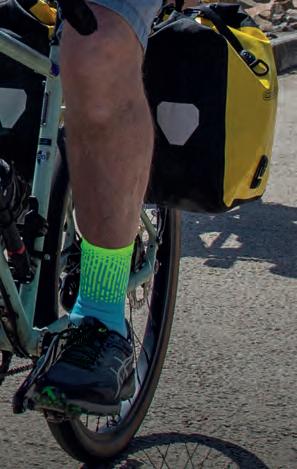
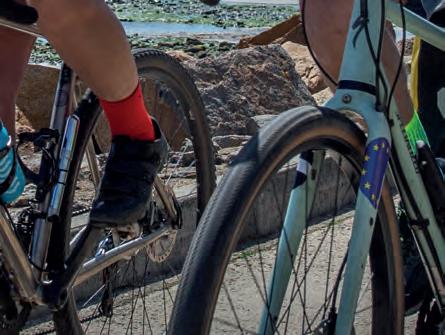




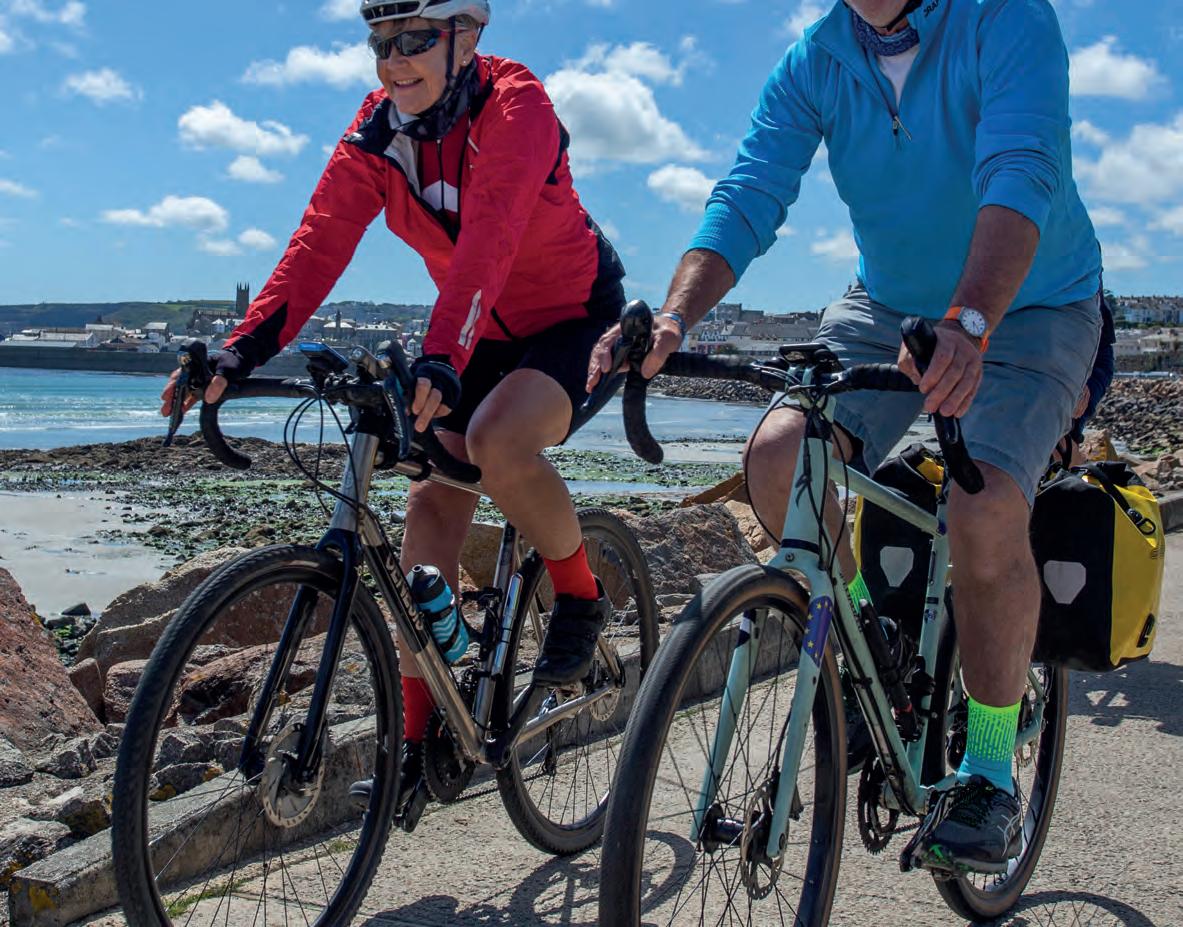
BACK ON TRACKS Why we’re rebooting Trails for Wales


AFFORDABLE HARDTAILS Carrera Fury Voodoo Bizango

7,300 MILES ACROSS EVERY OS LANDRANGER

Page 32


URBAN ARROW E-BIKE GARMIN INREACH MINI CHROME BAR BAG BAGGY SHORTS & MORE




















APRIL/MAY 2023



















TYPE 2 FUN AT STRATHPUFFER LONG DISTANCE TRAILS: WHAT BIKE? RIDE GUIDE TO THE BADGER DIVIDE AND MUCH MORE


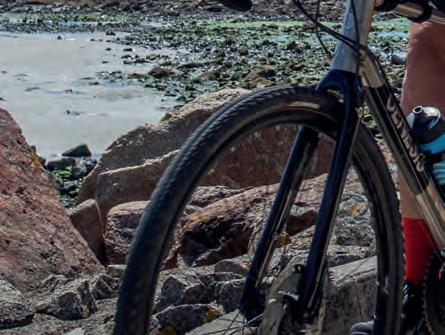
THE MAGAZINE OF CYCLING UK
cycle
On test
Plus
TOP TOURING
MEMBERSHIP FROM JUST £3.
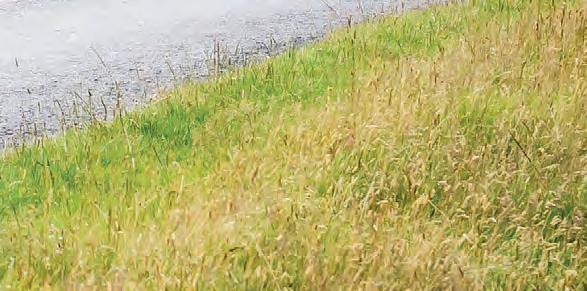

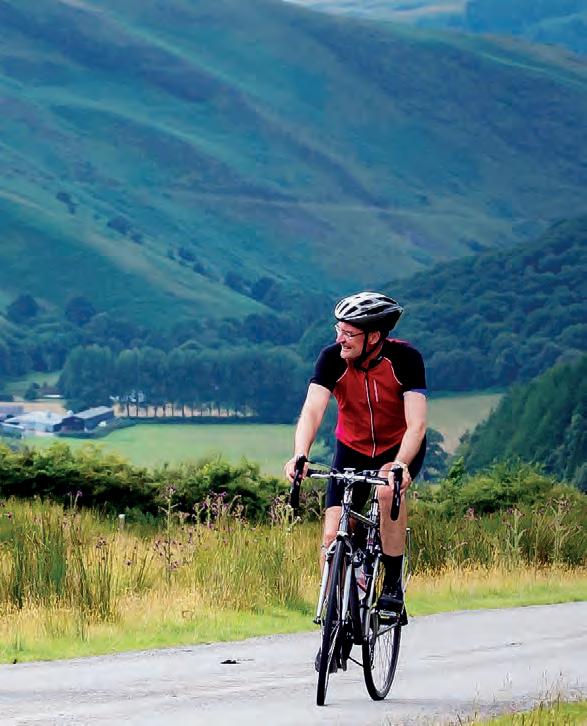
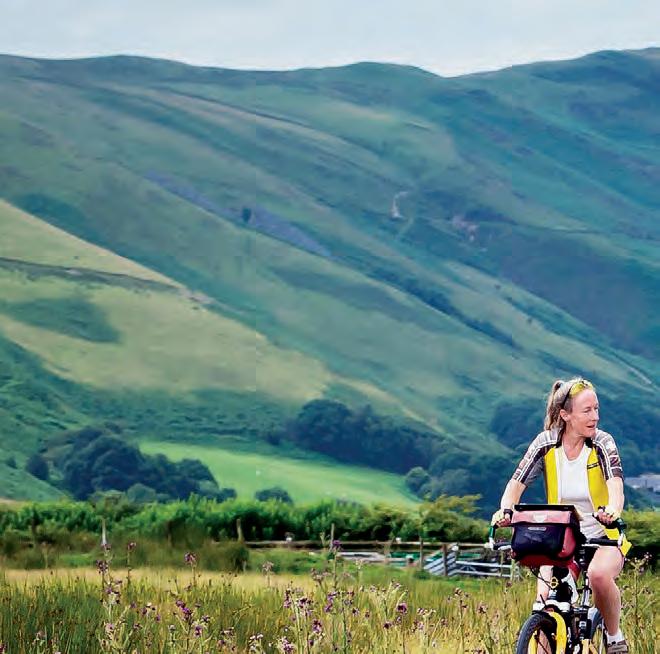

88 A MONTH!*

CLICK HERE FOR MORE INFORMATION
FEATURES

32 Ride all the OS maps
A 7,300-mile journey across all 204 Ordnance Survey Landrangers

Welcome
Try going down a brand. Before he was on the telly all the time, money saving expert Martin Lewis wrote a book called The Money Diet. That was some of his advice. Maybe you’d be just as happy eating supermarket own-brand beans, at half the price, as Heinz? As with beans, so with bikes.
Premium brands command premium prices. Sometimes it’s deserved: you get what you paid for. A case in point: the Brompton I bought over 20 years ago. It’s done its job better (for me, the only metric that matters in this assessment) than any cheaper bike I might have bought.
Sometimes with a premium brand you’re buying a marketing mirage or perceived status. Or a mix of performance, promised dreams and pomp. If you can afford the more expensive product and are happy with your purchase, it doesn’t really matter whether or not there’s a tangible improvement from paying more. But Martin Lewis’s advice is sound: do your own taste test.
The reputation that gets attached to brands is often undeserved. A Pinarello Dogma will not make you a better cyclist. Bikes from Halfords (see page 60) are not “rubbish”. Choose the product, not the brand.
There’s no contradiction in spending little on some products and more on what matters to you. Martin Lewis was happy with cheaper beans but wouldn’t buy shiny toilet paper. Me? I buy budget drivetrains and expensive tyres. How about you?
DAN JOYCE Cycle Editor

40 Beyond price
Simpler alternatives to big-name products that cost less and work as well
49 Back on tracks
Improved access to Wales’s rights of way network has stalled. What next?
52 A winter’s trail
24-hour mountain biking in the Scottish Highlands at Strathpuffer


PRODUCTS
18 Shop Window
New products previewed
20 Gear up
Components, accessories and books
60 Bargain hardtails
£680 Carrera Fury and £750 Voodoo Bizango on test

66 Urban Arrow Family
An electrically assisted bakfiets
69 Touring shorts
Baggy shorts for summer riding
REGULARS
04 Freewheeling
Bits and pieces from the bike world
07 This is Cycling UK
The Cyclists’ Defence Fund’s latest fight; new bikepacking videos; and a farewell to Eileen Sheridan and Lionel Joseph

16 You are Cycling UK
Long Covid sufferer Alex Needs
29 Letters
Your feedback on Cycle and cycling

46 Weekender
The Badger Divide, a 210-mile bikepacking route from Glasgow
56 Cyclopedia
Questions answered, topics explained
73 Travellers’ Tales
Cycling UK members’ ride reports

circulation is approx. 51,000. Cycling UK is one of the UK’s largest cycling membership organisations, with approx. 70,500 members and affiliates.
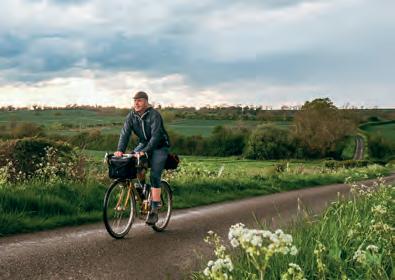
President: Jon Snow Chief Executive: Sarah Mitchell. Cyclists’ Touring Club, a Company Limited by Guarantee, registered in England No 25185, registered as a charity in England and Wales Charity No 1147607 and in Scotland No SC042541. Registered office: Parklands, Railton Road, Guildford, GU2 9JX.

CYCLE MAGAZINE: Editor: Dan Joyce E: editor@cyclinguk.org Designer: Christina Richmond Advertising: Bevan Fawcett T: 0203 198 3092
E: bevan.fawcett@jamespembrokemedia.co.uk Publisher: James Houston. Cycle is published six times per year on behalf of Cycling UK by James Pembroke Media, 90 Walcot Street, Bath, BA1 5BG. T: 01225 337777. Cycle is copyright Cycling UK, James Pembroke Media, and individual contributors. Reproduction in whole or in part without permission from Cycling UK and James Pembroke Media is forbidden. Views expressed in the magazine are those of the individual contributors and do not necessarily reflect those of the editor or the policies of Cycling UK. Advertising bookings are subject to availability, the terms and conditions of James Pembroke Media, and final approval by Cycling UK. Printed by: Acorn Web Offset Ltd, Loscoe Close, Normanton Industrial Estate, Normanton, WF6 1TW T: 01924 220633
On cycle BEYOND TOP TOURING Founded in 1878 CONTENTS On the cover Photoshoot for the West Kernow Way on Mounts Bay cycle path, Marazion, by Rob Spanring 60 40 73 32
Top to bottom: Mark Wedgwood; Jack Thurston; Dan Joyce; Dave Barden
CYCLING UK: Parklands, Railton Road, Guildford, GU2 9JX E: cycling@cyclinguk.org W: cyclinguk.org T: 01483 238300. Cycle promotes the work of Cycling UK. Cycle’s
Details
Where: All of Great Britain
Start/finish: Shetland/Cornwall


Distance: 11,757km
Photos: Mark Wedgwood
 Above: Hermaness, Shetland (map 1)
Below: Mark and Jenni on the last day (map 203)
Above: Hermaness, Shetland (map 1)
Below: Mark and Jenni on the last day (map 203)
MARK WEDGWOOD

Mark is a lapsed leadership training consultant turned adventure cyclist. Follow him on Instagram at @ridealltheosmaps
Great Rides
RIDE ALL THE OS MAPS
Mark Wedgwood wanted a challenge. He found it between the covers of 204 OS Landrangers, crossing them all in a 7,300-mile journey
It was autumn 2021 and I was looking for an adventure. Something big.
On a bike, more than likely. For the first time after many years of parenting and doing a full-time job, I had an opportunity to spread my wings. All the years of dreaming could finally be made real. But what? It didn’t help that we were in the throes of a global pandemic. International travel was complicated at best. A domestic adventure, perhaps, was the right choice. Exotic could wait.
The idea hit me unexpectedly when I started looking at maps of Britain.
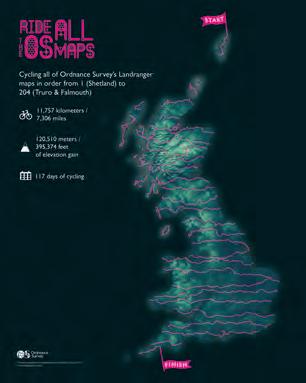
Ordnance Survey maps, of course – the 1:50,000 Landranger series. I have loved them all my life but never before noticed the numbering system. I could cycle across all 204 of them, in numerically ascending order. About 7,000 miles, I reckoned, which would be a nicely challenging amount for the six best cycling months of 2022. Better yet, it seemed no one had ever done this before. It was the perfect adventure: to cycle all of Britain and go everywhere.
IN THE PINK
And so, on 9 May 2022, I found myself high up on the wild cliffs of Hermaness on the island of Unst. I was at the very top of Shetland – and map number one – sitting on the grass alongside my wife, Jenni, and a great many puffins. It doesn’t get much better than that. Across the pounding sea rose the jagged rocks of Muckle Flugga, with
its impossible-looking lighthouse, Britain’s most northerly. It felt like the edge of the world.
We spent the next week traversing the remote and mostly treeless Nordic archipelagos of Shetland and Orkney, ticking off the first seven Landrangers, battered daily by fierce wind. We rode ferries and visited archaeological sites of great antiquity. I saw no Scottish flags here. People feel a cultural pull to the north, reflected in the place names and local traditions. It felt, in many ways, very far from my home on map 110 in the Derbyshire hills. It would take me until late September to reach home by bike, exactly half the Landranger series away.
On the small ferry from Papay (on map 5 Orkney Northern Isles) to the Orcadian capital of Kirkwall on Mainland, we met an elderly man who was born and raised on the nearby island of Westray. As his car was winched aboard, he told us about the queen’s visit there in 1960 on the royal yacht. The biggest change to island life, he recalled, was when the fields on Westray were fenced and you could no longer simply walk in a straight line anywhere you liked. We said we had just come from Shetland. “I’ve never been there,” he said.
Map 8 lay inconveniently on the north of the Isle of Lewis in the Outer Hebrides. It required me to make the first of many circuitous journeys across Scotland to reach the starting point of a west-to-east traverse of the country. This initial
CYCLINGUK.ORG cycle 33
ALL THE OS MAPS GREAT RIDES
Across the pounding sea rose the rocks and lighthouse of Muckle Flugga. It felt like the edge of the world
BEYOND
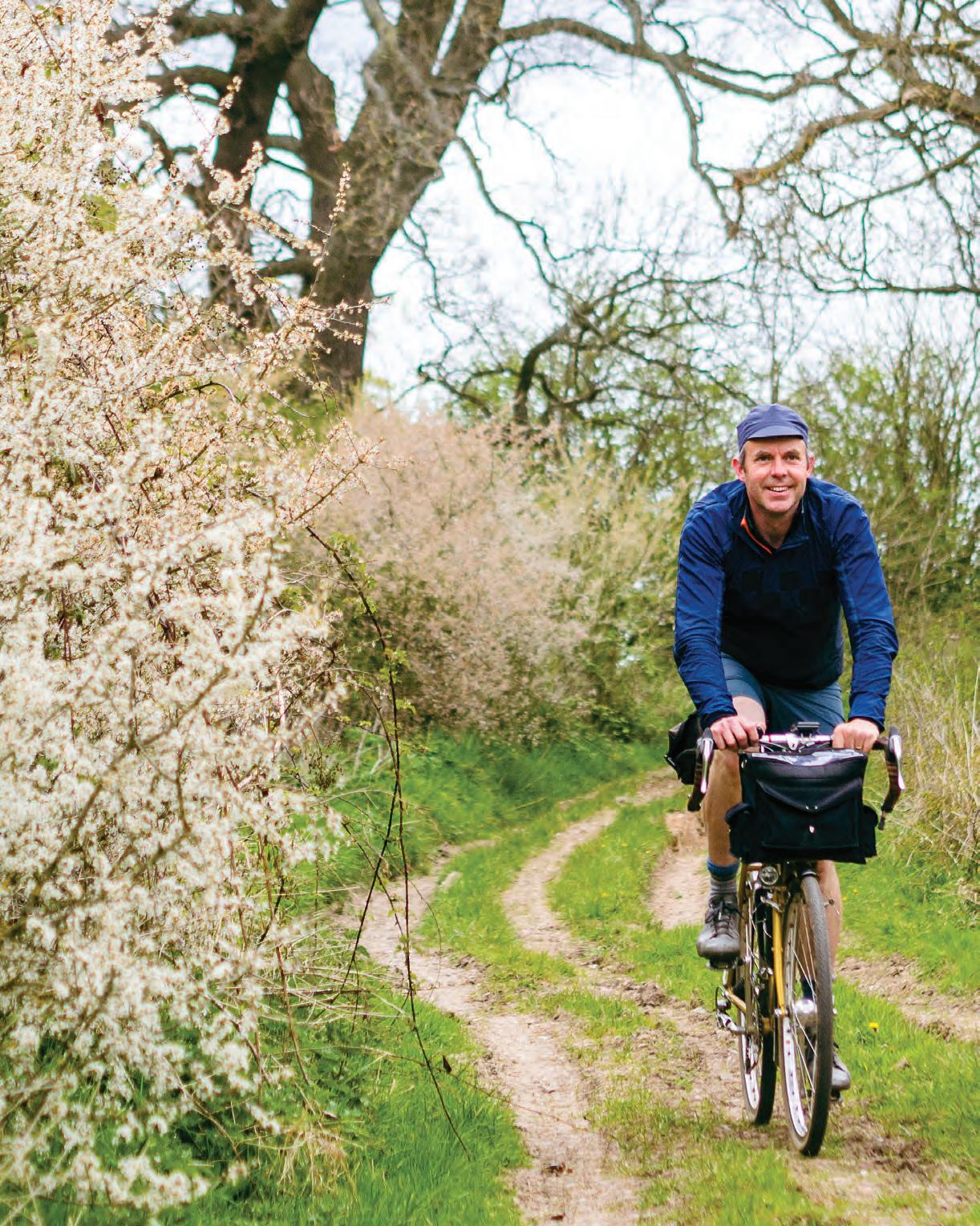
40 cycle APRIL/MAY 2023
SIMPLER ALTERNATIVES TO BIG-NAME BIKE PRODUCTS SAVE YOU MONEY AND CAN WORK JUST AS WELL. AUTHOR JACK THURSTON INVITES YOU TO JUMP OFF THE BRANDWAGON
Have you ever noticed that things seem to be much more expensive as soon as the word ‘cycling’ is added to them? And that, even among cycling-oriented products, there’s a huge range in cost between budget and luxury brands? With the cost-of-living crisis putting pressure on everyone’s budgets, I went in search of the things that defy the adage that you get what you pay for.
I’ve collected money-saving tips from experienced cyclists, industry insiders and the magnificent hive mind of the Cycling UK forum. Prices quoted are what you can expect to pay if you shop around. (Online search engines are invaluable.) But I’ve also included manufacturer websites so you can read more about the products mentioned.
CLOTHING
For most recreational and utility cyclists, there’s little need for cycling-specific clothing. What that works well for general outdoor activities will usually work well on the bike: lightweight, fastdrying fabrics with a bit of stretch to accommodate movement. Cycle editor Dan Joyce rides in Craghoppers Kiwi
Pro shorts (craghoppers.com , £32.50), while I’ve found that Simond knee-length stretch-cotton bouldering shorts from Decathlon (decathlon.co.uk , £24.99) are durable and comfortable. Ronhill’s classic Tracksters (wiggle.co.uk , £19.55) have a looser, less figure-hugging fit than most cycling tights, and double up for running, hill walking and climbing. They last forever.
Merino wool is lightweight, insulating, moisture-wicking and has natural antimicrobial properties that neutralise odours. The only real downside is the price – and the susceptibility to clothes moths! But there are deals out there. Decathlon uses merino that’s traceable to South African farms where the harmful practice of ‘mulesing’ sheep is forbidden. I’ve found the Forclaz Travel 100 T-shirt (£21.99), long-sleeve top (£39.99), buff (£11.99) and beanie hat (£11.99) are on a par with the premium brands.
Cycling activist Sally Hinchcliffe singles out Aldi’s merino thermal tops and long-johns, which come and go from the ‘middle aisle’. Chris Juden, former Cycling UK technical officer, swears by Marks and Spencer’s 100-denier merinoblend ladies’ tights (£10) for adding extra warmth to cycling tights. He cautions that as they’re designed for women, long-legged men need to size up.
A lightweight synthetic down jacket is a great way to keep warm on winter rides or in cool evenings when touring. Bikepacker James Olsen, founder of the Torino-Nice Rally, sings the praises of both Decathlon’s Forclaz MT100 hooded jacket (£34.99) and the MT100 sleeveless gilet (£24.99), which he “wears all the time”. A common selling point for cycling-specific clothing is reflective detailing, but it’s possible to add this to any garment with strips of reflective tape. Sew-on and iron-on varieties are available from eBay sellers.
Everyday shoes with a rubber sole and flat pedals are a good choice for most people. Crocs are surprisingly useful

CYCLINGUK.ORG cycle 41 BEYOND PRICE FEATURE
Photos: Jack Thurston.
BACK ON TRACKS
More liberal access to Wales’s rights of way network has stalled. Sophie Gordon explains what happened – and what Cycling UK is doing about it
Cast your mind back to spring 2019. The Welsh Government made a visionary commitment to increase access to the outdoors, with the then deputy minister Hannah Blythyn promising to “facilitate an assumption of non-motorised multi-use on access land and the public rights of way network.”


This was hugely exciting – a culmination of years of campaigning. During two rounds of consultation on public access to the countryside, Cycling UK and off-road advocacy group OpenMTB mobilised 12,000 people to respond in support of widening access rights.
The Welsh Government listened and promised to deliver change, including making rights of way multi-use by default (which would enable cycling on most, but not all, public footpaths), and relaxing restrictions on open access land to allow a wider variety of activities. So far, so good.
ACCESS DELAYED
Since then, it’s all gone quiet. Four years later, no decisions have been made on how to implement the proposals. We knew change wouldn’t happen overnight. Following the announcement,
Cycling UK and OpenMTB joined other outdoor organisations and land manager representatives on expert advisory groups to thrash out the details of how the access reform proposals should work in practice. How should it be decided if a path isn’t suitable for shared use? How can changes to access be communicated in a way that is clear and promotes responsible use?
Those meetings began purposefully in early 2020. As we all know, many best-laid plans were thoroughly derailed in 2020. After several delays, a report was presented to the Welsh Government at the end of 2021, setting out the conclusions from the expert discussions.
Unfortunately, rather than making clear recommendations for what to do next, the report merely outlined the options and kicked it back to the government to decide. That’s when things stalled. Access reform was in danger of slithering uncontrollably to the bottom of the political agenda like a mountain biker on a muddy slope.
THE PATH AHEAD
Cycling UK’s engagement officer for Wales, Gwenda Owen, was busy behind the scenes

CYCLINGUK.ORG cycle 49 Feature
Some of the Snowdonia Slate Trail is already rideable
SOPHIE GORDON Cycling UK campaigns officer
FEATURE TRAILS FOR WALES
Photo: Sam Dugon
MEMBERSHIP FROM JUST £3. 88 A MONTH!*
MEMBERSHIP FROM JUST £3. 88 A MONTH!*
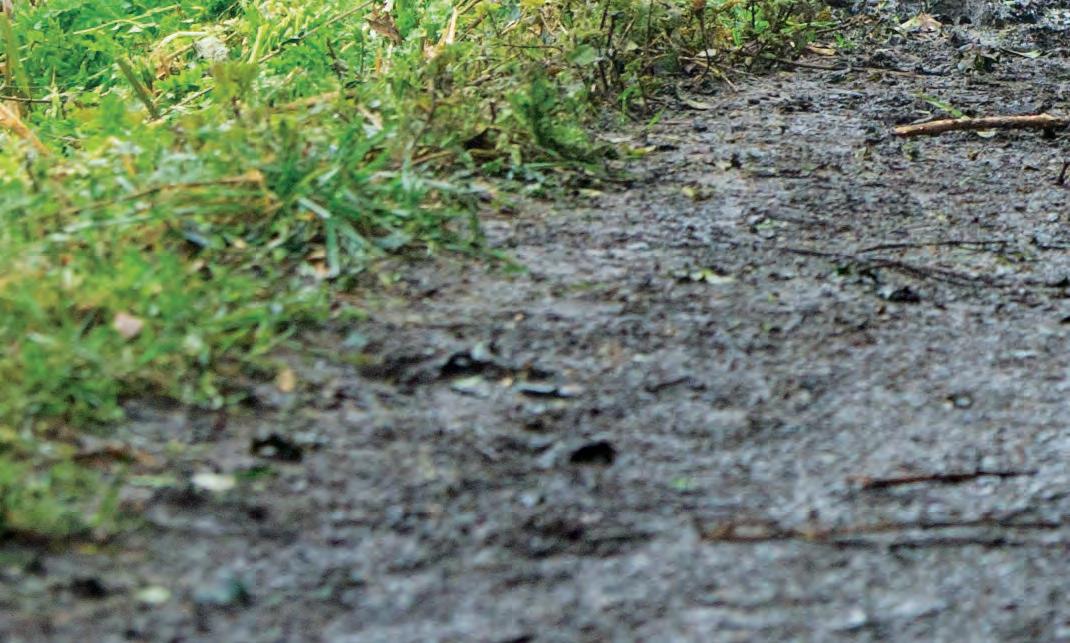



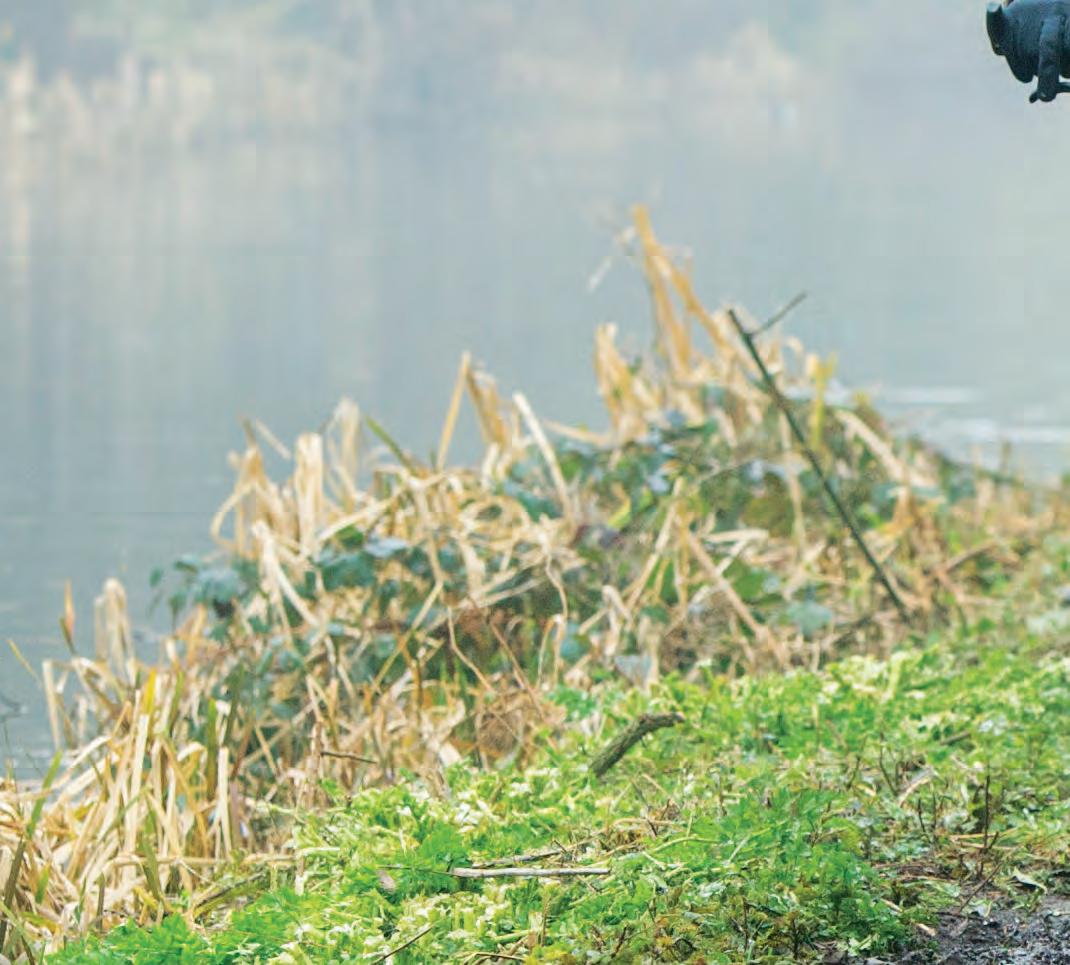
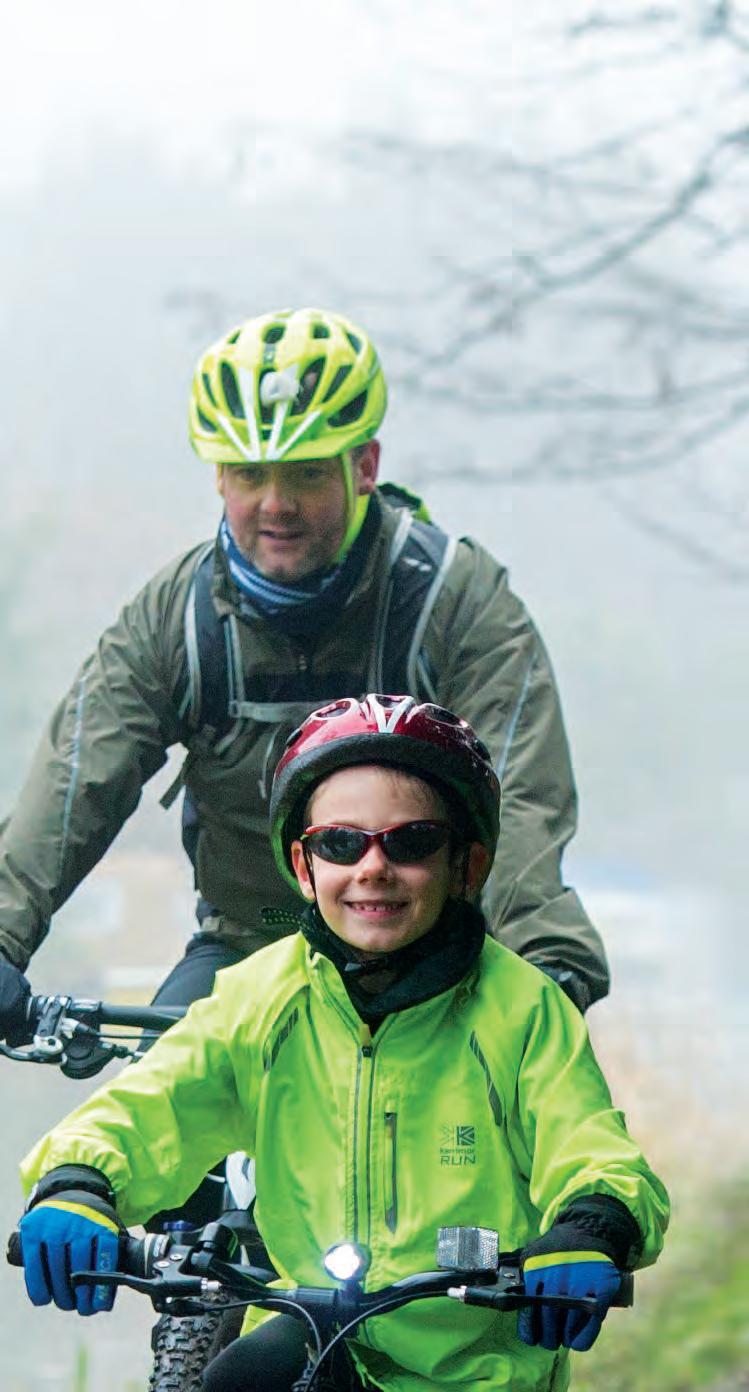

CLICK HERE FOR MORE INFORMATION *See www.cyclinguk.org/join for more information and for terms and conditions.
CLICK HERE FOR MORE INFORMATION
Great Rides
A WINTER ’ S TRAIL
Strathpuffer is a 24-hour mountain bike event in the Scottish Highlands – in January. Jordan Matthews couldn’t wait to get started
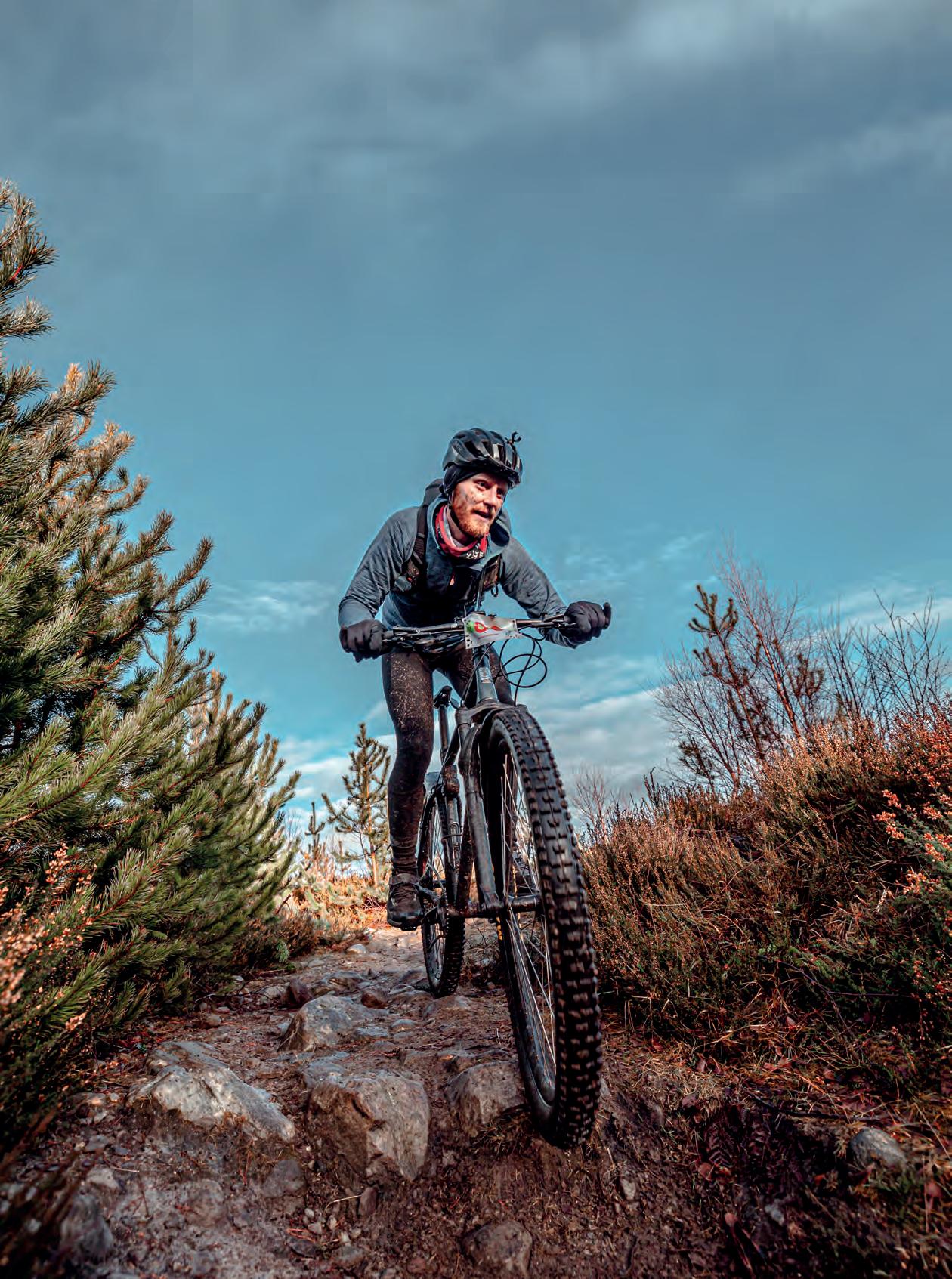
wordpress.com

THE FAR NORTH

This is the last lap I’m doing. Definitely. No question. My stomach, head and legs can’t take another. There’s a never-ending climb at the start. Technical sections where I’ve slowed to a walk. A final descent where I just grip tight and hope I don’t end up face down in the mud. I’m done. The transponder beeps as I pass through the start/finish area. My legs are taking me up that climb again. Maybe one more?
Strathpuffer is an event I have dreamed about ever since I read an article about it, in which a rider went through four sets of brake pads in 24 hours. I’ve pored over photos and stories of endurance in snowy Scotland in the depths of winter. I don’t know why I was drawn to it. Not to win. Like most participants in 24-hour events, I’d only really be competing against myself and the course.
Strathpeffer is north-west of Inverness in the Scottish Highlands. It took my dad and me six hours to drive there. The course’s fire-road climb in Contin Forest was already lined with campervans and vans. It was like Alpe d’Huez the day before a Tour de France stage. We found a quiet spot where we could put up our gazebo and get ready for the 10am start next morning. Then we cycled a few miles into Strathpeffer to our hotel. A warm night’s sleep before 24 hours of cold!
Back in the forest on Saturday morning, we had a couple of hours faffing with

the bike and base setup before I made my way down to the start line for the briefing. ‘The Puffer’ is famed for its Le Mans start. Competitors start on foot, following a piper through the trees. When the piping stopped at 10am, we ran to our bikes, hopped on, and headed up the climb.
LAPPING IT UP
The first lap was a case of learning the course, trying not to fall off or get involved in any crashes, and constantly reminding myself not to push too hard. There were still 24 hours to go. In hindsight, I set off too fast.
The first few laps passed without incident. I got to know the course, discovering where I could make up time on other riders, where I would lose time, and where I just had to hope for the best. Fortunately – as I’m not a particularly skilled rider – the course wasn’t as technical as I’d feared.
While I wasn’t riding to win, I did have a list of things I wanted to achieve at Strathpuffer: enjoy it; see the sunset; see the sunrise; give it all I had; finish rather than quit.
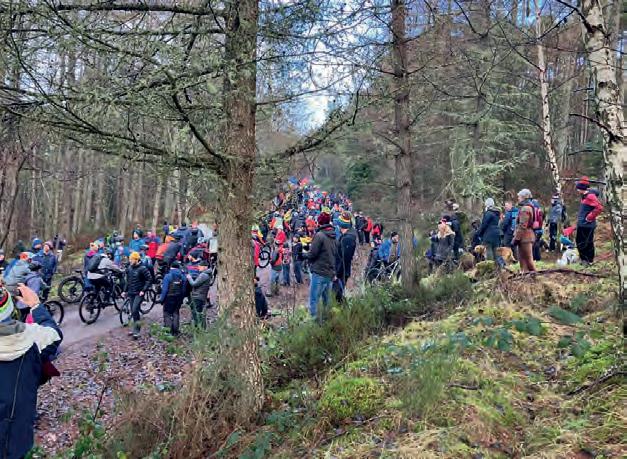
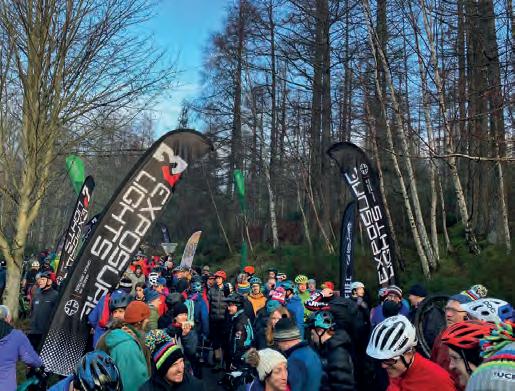

I planned to ride for six laps before stopping to sit down, change clothes and eat hot food. Those first laps went really well. My dad provided invaluable support, offering up bottles, snacks and the allimportant cups of coffee on the long, slow climb.
At around 4pm the sun dipped behind the hills. I ticked one item off my list. The sun was setting as I crested the climb, so I paused to savour the moment and grab a photo. Then I started the descent. Ahead lay 17 hours of darkness.
THE LONGEST NIGHT
I switched on my handlebar light, on low power at first, then on medium brightness
Bright ideas
Strathpuffer takes place in January in northern Scotland, so most of it – 17 hours, give or take – is in darkness. I used two lights: an Exposure Diablo (mine) and an Exposure Six Pack (hired for £25 at the event). I mounted the Diablo on my helmet and switched it on just for the technical sections. The Six Pack, fitted to the handlebar, was my main light. I mostly used the lowest setting, switching to a higher beam for the technical parts of the course. It was a good combination and both lights lasted all night. The Six Pack still had six hours of burn time left!
CYCLINGUK.ORG cycle 53
STRATHPUFFER GREAT RIDES
Main
Phill
photo:
Rodham
JORDAN MATTHEWS
Jordan is a keen long-distance rider. His blog is justoutpedalling.
This photo: The first climb on the first lap
Bottom: Friday night: base camp all set up and ready
Waiting for the piper to signal the start
DAN JOYCE

Dan has ridden three previous versions of the Carrera Fury and has owned an older model of the Voodoo Bizango
Bargain hardtails
Even entry-level hardtail mountain bikes are becoming expensive these days. Among the big-name brands, it seems you now need to spend £900 or more to get a good one. By ‘good’, I mean that the bike has: steering geometry that’s stable enough to cope with contemporary trails; nothing major that needs replacing; and a suspension fork that’s adjustable for both rider weight and rebound, so it absorbs bumps effectively and doesn’t simply pogo back up.
It’s the fork that’s often – and sometimes literally – the sticking point. Most budget hardtails come with unsophisticated coilsprung forks, whose problems include overly stiff springs, limited adjustability, stiction and sometimes flexy fork stanchions. While I’d rather have a rigid fork than a cheap coil fork, the cycle industry disagrees with me: below about £900, a budget coil fork is what you'll get.
First look
A well-specified hardtail whose 125mm dropper and tall seat tube complicate sizing
Unless you look at superstore own brands and online retailers, where £700 can buy a hardtail with an air-sprung fork. The performance difference this offers is immediately noticeable, so much so that I only considered bikes with air forks for this test.

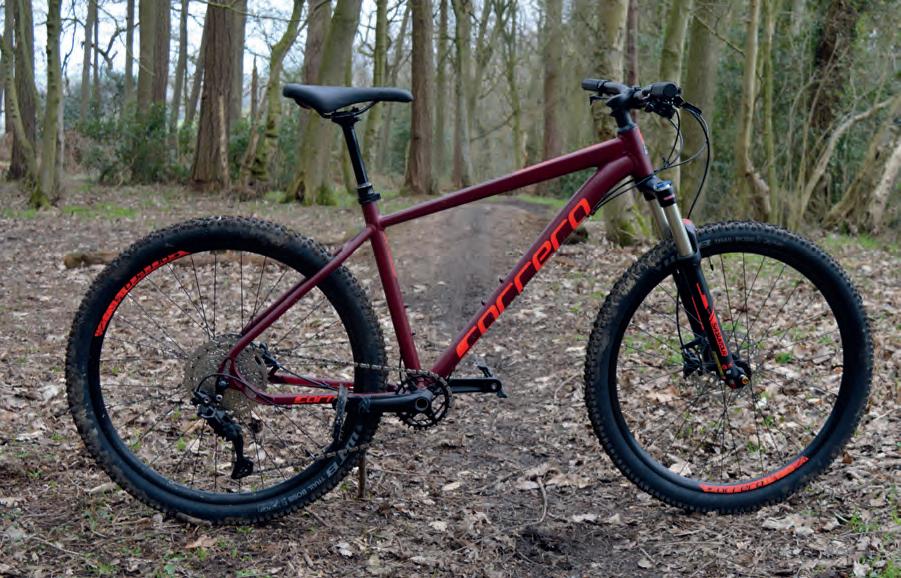
The review bikes are both from Halfords. The Carrera Fury is £680, the Voodoo Bizango £750. They’re sometimes discounted, and Cycling UK members get 8% off at Halfords in any case.
Frame & fork
Both bikes have frames TIG welded from unspecified aluminium tubing. The Voodoo’s has a longer wheelbase as it's longer in the top tube and accommodates larger, 29in wheels. Its chainstays are only 10mm longer than the Carrera’s, however, as the seat tube is curved to enable the bigger wheel to sit closer to the bottom bracket.
In other respects the frames are similar. The
Biketest 60 cycle APRIL/MAY 2023
Despite inflation it’s still possible to get a proper mountain bike for well under £1,000. Dan Joyce tests the Carrera Fury and the Voodoo Bizango
BIKE TEST BARGAIN HARDTAILS
head angles (67º and 66.5º) are relatively slack, which provides more stabilising trail and puts the front wheels slightly further forward, making it less likely you’ll dive over the handlebar on a descent.

Both bikes have 18in seat tubes. That used to be fairly typical for a medium-sized mountain bike but if you’re going to use a dropper seatpost – the Carrera comes with one and the Voodoo has cable routing to fit one – it’s too tall. A dropper post adds the length of its travel (usually 100mm or more), plus the depth of its collar (25mm-plus), to the bike’s minimum saddle height in the undropped position.
Initially, I received the size L Carrera Fury for testing. Halfords’ size guide suggested it for my height, and I prefer its longer reach, having ridden both M and L Furies in the past. I could barely reach the pedals with my tiptoes! So I swapped it for the size M. You’ll see from the pictures that the dropper is as low as it will go in the frame. Though rideable, it’s still a few millimetres too high for me. I’d like to see the Carrera and the Voodoo specified with seat tubes 50mm shorter across the range.
Frame clearances are good. Either bike would take 2.4in tyres and should fit 2.6in tyres in less muddy conditions. Both bikes have so-called ‘Boost QR’ rear dropouts. This is a standard 10mm-diameter quick-release dropout that’s 141mm wide. It’s nice to have slightly wider hub flanges, as that makes for a laterally stiffer wheel, but you don’t get the same benefit that you would with a (more expensive) screw-thru axle. Note that the Voodoo Bizango now has vertical dropouts like the Carrera; some older models (mine) had adjustable dropouts.
The head tubes of the bikes are different sizes. The Carrera’s takes a straight 1 1/8in steerer, the Voodoo’s a tapered (1 1/8in to 1 1/2in) steerer. A tapered steerer is stiffer, so you should get less fork ‘flutter’ while braking. It’s also the most common standard for better-quality suspension forks, so it’s much easier to upgrade the Voodoo’s fork than the Carrera’s.
The two forks fitted are 120mm-travel Suntour Raidon LOR models with 32mm diameter stanchions. The acronym signifies that they have adjustable
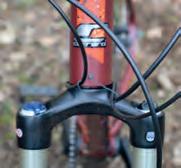
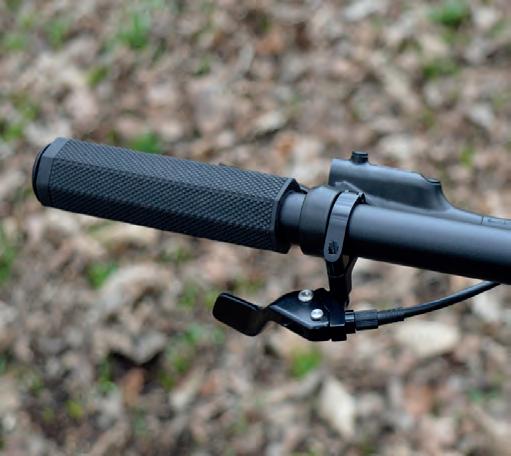
Tech Spec
PRICE: £680
SIZES: S, M (tested), L
WEIGHT: 13.7kg/ 30.1lb (no pedals)

FRAME & FORK: butted aluminium frame with 1 1/8in threadless headset, 73mm threaded bottom bracket, 141mm QR dropouts and fittings for dropper cable, mudguard, threepoint rear rack, two bottles. Suntour Raidon LOR air fork with 120mm travel and 15×100mm Q-Loc thru-axle.
WHEELS: 54-584

WTB Trail Boss tyres, Carrera double-wall aluminium rims, 32×3 spokes, unbranded 15×100 aluminium front hub, unbranded 141mm QR rear hub.
TRANSMISSION: alloy pedals (not used), 175mm
Prowheel chainset with 32t narrow-
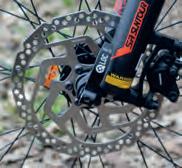
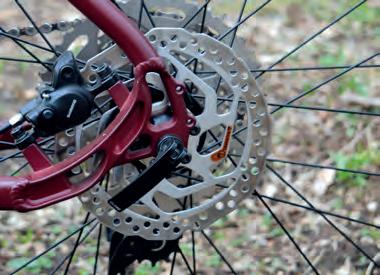
wide chainring, Hollowtech II-style bottom bracket, KMC X10 10-speed chain, 11-46t Shimano CS-HG500 10-speed cassette. Shimano Deore 10-speed shifter and rear derailleur. Ten ratios, 19-80in.
BRAKING: Shimano MT200 hydraulic disc brakes with 180mm front and 160mm rear rotors.
STEERING &
SEATING: Carrera MTB hexagonal grips, 760×31.8mm Carrera aluminium riser bar, 45mm×3º Carrera aluminium stem, 1 1/8in semi-integrated threadless headset.
Carrera Memory Foam MTB saddle, 31.6mm Satori Satoro Pro dropper seatpost with 125mm travel, 34.9mm seatpost clamp. halfords.com
CYCLINGUK.ORG cycle 61
The Carrera’s dropper post is a standout feature at this price… I was frequently glad to have it
CARRERA FURY
74.5˚ 1145 175 584 141 457 425 76 54 305 723 780 610 650 67 700 103 42 Dimensions in millimetres and degrees BARGAIN HARDTAILS BIKE TEST
Top: Overlong cables and hoses were the Carrera’s only assembly issue Bottom: Quick-release convenience, thru-axle security (says Suntour)
MEMBERSHIP FROM JUST £3. 88 A MONTH!*
MEMBERSHIP FROM JUST £3. 88 A MONTH!*



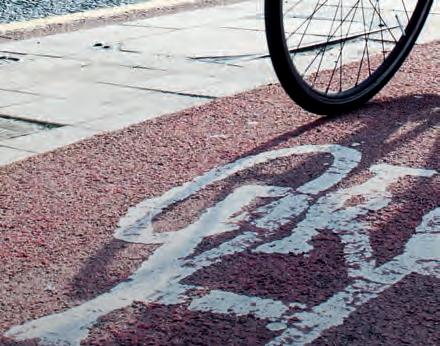
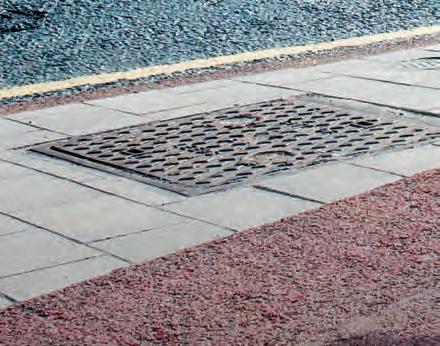

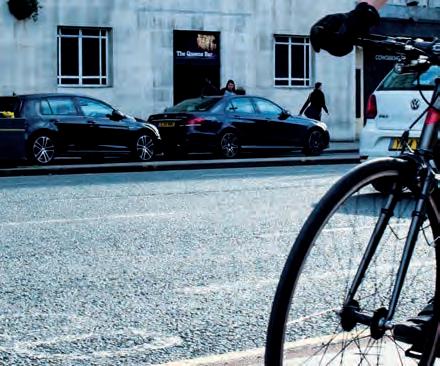
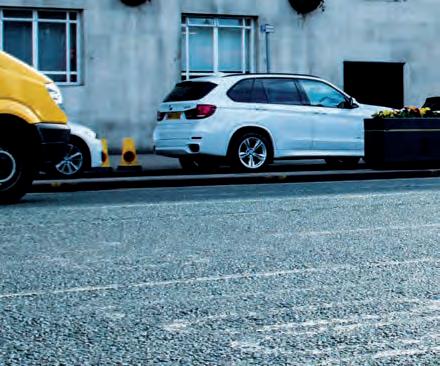
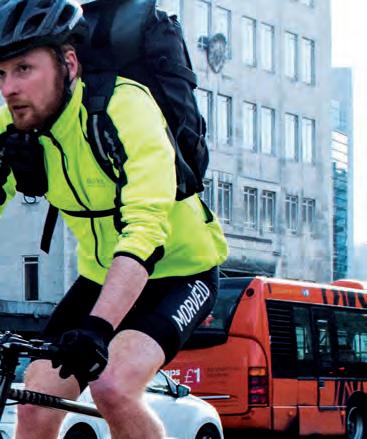
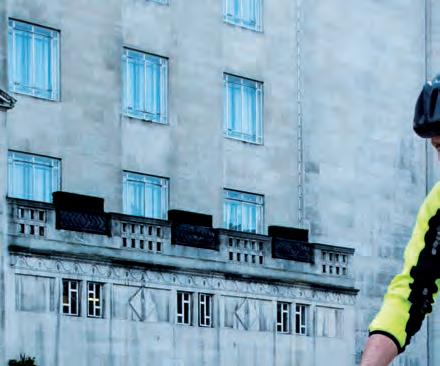




CLICK HERE FOR MORE INFORMATION *See www.cyclinguk.org/join for more information and for terms and conditions.
CLICK HERE FOR MORE INFORMATION
Women’s shorts
Read our previous baggy shorts grouptest: cyclinguk.org/article/ group-test-womenscasual-shortssummer-rides
Details WHAT TO LOOK FOR
Grouptest Touring shorts
Lycra shorts are de rigueur for racing but only optional for touring. Richard Hallett tests four baggy alternatives
Summer cycle touring means shorts, and for many tourists that means shorts that are a looser fit than the skin-tight clothing worn by competitive cyclists. Baggy shorts suit more leisured cycling and go unnoticed when off the bike. Designs range from the very baggy, long shorts favoured by mountain bikers through to more sober designs with a lineage stretching back to the cycle touring boom of the 1920s.
Leg length is critical for cycling shorts, since the hems ride up when pedalling and shorts that look fine when walking can look alarmingly brief in the saddle. Pockets are a good idea and are invaluable off the bike, but bulky objects placed in front pockets can prove troublesome on a ride, while those in pockets on the outer thighs can cause chafing. It may be worth transferring items such as a wallet or phone from the shorts to, say, a bar bag during the ride itself.
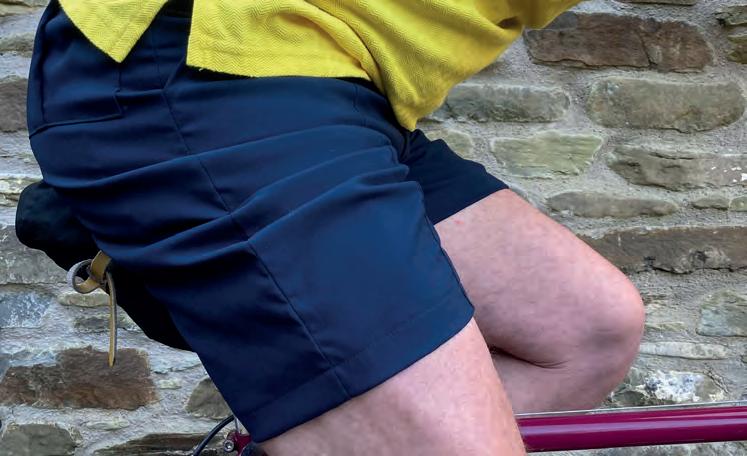
Fabric choice is also hugely important. Some sort of lightweight, technical fabric with sweat-wicking capability and at least some stretch will prove much more comfortable than the stiff, usually cotton-based cloth used for non-cycling shorts. A removable liner, whether padded or not, can add comfort and can usually be washed and dried more easily than the shorts. Two or more such liners can be carried on a longer tour at a small cost in weight and bulk.
Cycle’s test promise
At Cycle, we are proudly independent. There’s no pressure to please advertisers as we’re funded by your membership. Our product reviews aren’t press releases; they’re written by experienced cyclists after thorough testing.
1 Fabric
Thicker is likely to be more durable but may feel restrictive on the bike. Lighterweight, quick-drying fabrics with a degree of stretch tend to be most comfortable.
2 Length
Shorts ending below the knee can feel draggy, especially on a longer ride. Bagginess is also a factor: too much can cause flapping in the wind and chafing.
3 Pockets
Desirable, but objects stashed in conventional front pockets can impede pedalling. Items can fall


out of any unzipped pockets.
4 Waistband
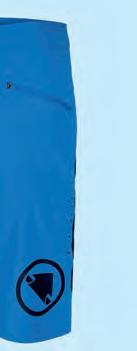
Elasticated or easily adjustable preferred, as a fixed circumference can be constricting when riding. The waistband fastening should be robust enough to withstand unanticipated tension when breathing hard.
5 Liner
Some shorts come with or have an optional padded liner, which many cyclists prefer. Any shorts can be worn on top of padded cycling underwear or Lycra shorts.

CYCLINGUK.ORG cycle 69
RICHARD HALLETT
TOURING SHORTS GROUPTEST 1
2
Cycle’s technical editor
4 5
3
Everyday journeys England & Germany
There’s joy in small trips as well as tours, says commuter David Futter
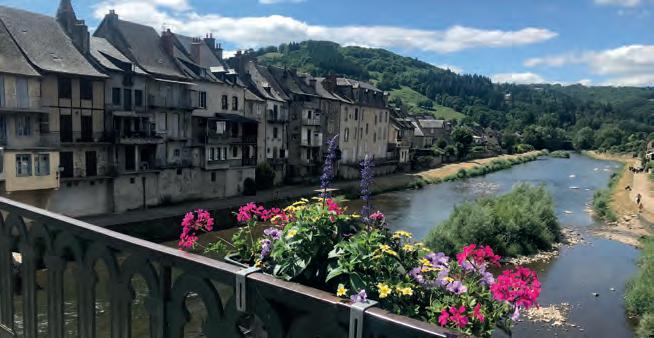
France

From the Med to la Manche

To celebrate our 60th birthdays, my friend John and I decided to cycle across France. Another friend had recommended the St Malo to Nice route, so we bought the book (franceenvelo.cc), downloaded the GPX files, and tore some pages from a Michelin road atlas as a backup.
We decided to ride the route in reverse. We sent our bikes to our hotel in St Raphael on the Mediterranean, using a courier called SendBike, then followed by train. We started in St Raphael instead of Nice as the Grand Prix coincided with our start day.
The plan was to do the ride in 14 days with no rest days – a risk if we had problems. We travelled light, with a saddlebag and handlebar bag rather than panniers. This made it easier to average 120km (80 miles) each day. With a 7am start each morning, we usually reached our destination mid afternoon.
The early starts were well worth doing. We’d grab coffees and pastries after a couple of hours and get a good mileage in before the heat built. It was surprisingly cool first thing even in the south, although by lunchtime it was usually around 30ºC.
The real pleasure of the ride was the peaceful and beautiful countryside –
mountainous in the south, with many gorgeous villages, and gently rolling hills further north. My favourite town was Vaison-la-Romaine, which has medieval streets and Roman remains. It’s a little off the France en Velo route as we’d detoured to cycle up the magnificent Mont Ventoux.
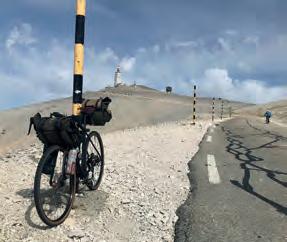
It was a joy to hear birdsong throughout the journey. We heard nightingales (who also sing during the day), golden orioles, turtle doves, bee-eaters, and more. Roadside verges were covered with wildflowers.
We arrived at St Malo at 4pm on our planned final day, having had no mechanical problems or bad weather. That left time for a wonderful swim, followed by mussels and chips, a comfy hotel, and ferry home early the next morning.
I WAS INSPIRED to put fingers to keyboard by a letter to Cycle magazine and a news update for Cycle to Work Day. My ‘traveller’s tale’ is that I have commuted by cycle for over 30 years, first from Sandiacre to Ratcliffe-on-Soar, then from Breaston.

The cycle commute, mainly along lanes through farmland, set me up nicely for the day. I’d regularly see a variety of wildlife, even the occasional owl. Lighting is never a problem with a dynamo, although lights have advanced a great deal in the last 30 years. I could not be accused of being a fair-weather cyclist, braving rain, snow, floods, wind and fog. There is no such thing as the wrong weather, just the wrong clothes. Besides, with showers and changing facilities at the office, weather was rarely a problem.
In 2017 I moved to a new job in Rudolstadt, Germany. I still commute to work by bicycle. It is now only three miles, mainly along the Saale Radweg. The cycle lanes here are great: cars all give way at side roads, and the lanes are well cared for. The cycle paths are regularly swept, and in winter are cleared and gritted by 7am. Despite being in town, I still see the occasional hare. Woodpeckers can be heard along the banks of the Saale.
Cycle commuting may not be long distance but it adds up. I cycled about 75% of my commutes in the UK, and more in Germany. That’s over 50,000 miles travelled, more than 5,000 litres of petrol saved, and no need for a second car in the family. At about £3,000 per year, I must have saved over £100,000 so far. But I never thought about this. I commute by bicycle because I enjoy it and it keeps me fit.
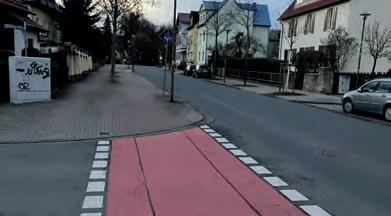
TRAVELLERS’ TALES 74 cycle APRIL/MAY 2023 Stay connected facebook.com/CyclingUK Twitter @wearecyclinguk membership@cyclinguk.org editor@cyclinguk.org
Mont Ventoux: almost there! Germany: priority for cycle-paths
River Lot
Rob Hopkins and his friend John cycled end-toend across France from St Raphael to St Malo
More online
contributing to Cycle?
magazine
Fancy
Read the guidelines here: cyclinguk.org/be-part-cycle-
































































 Above: Hermaness, Shetland (map 1)
Below: Mark and Jenni on the last day (map 203)
Above: Hermaness, Shetland (map 1)
Below: Mark and Jenni on the last day (map 203)




















































